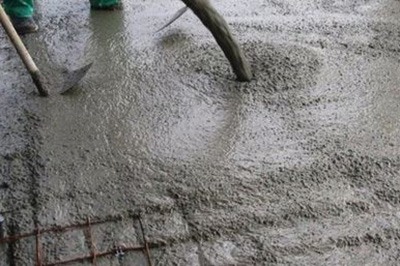
Question: We hear a lot about sustainable or green concrete but what does that really mean?
Answer: This question came up at the 2016 Breakfast with the Experts at the World of Concrete and the assembled BASF experts had some thoughts.
David Green: Sustainability is emotional. Depending on who you’re talking to (architect, owner, contractor) they may have different definitions. Ultimately, we’re all focused on reducing the environmental impact, but we want to do it economically. It shouldn’t cost significantly more to develop products that use less material or use less energy.
We have those innovations and we want to use them, but it’s a matter of being more selective in what you deliver to result in a more durable product—the concrete itself. A more durable product will require less maintenance as part of the cost of ownership. So the total cost of that product is less, and that’s a more sustainable decision.
Mark Bury: BASF has a program called Green Sense Concrete. The purpose is to optimize concrete mixes to be as sustainable as possible. And while it’s true that a lot of fly ash mixes meet the criteria, we don’t have to use fly ash. For example, we can use all kinds of powders to replace portland cement, such as limestone fines, glass powders, aggregate fines, oil shale fines, or off-spec silica fume. With any powder, we can optimize the fines with the chemicals we use in concrete to make a very durable concrete that meets the design specifications. And then we would do the environmental analysis of that material.
It doesn’t necessarily have to be fly ash, it can be any other powder that results in concrete with good strength, good durability, and a lower environmental footprint. Off-spec silica fume is fume that doesn’t meet ASTM C 1240, Standard Specification for Silica Fume Used in Cementitious Mixtures. Some of it has impurities or it’s not as high an SO2 content. Most of the time this material gets landfilled, but there are plenty of applications where you could incorporate it into a mix and get good performance.
Almost any powder can be tried. For example, we did some research on powder made from recycled ceiling tiles. It didn’t quite pan out, but many different powders from various sources are available in different locations.
Fred Goodwin: Another aspect to sustainability is making concrete last longer. Once the concrete is placed, keeping water out is the biggest priority. You need water in concrete to place it, but with proper cover over the reinforcing steel and good curing and a reasonable water-cement ratio, then if you can keep the water out, you no longer have alkali-aggregate reaction or corrosion or freeze-thaw or chloride attack. In other words, maintain the concrete—take care of what you have and it will last a long time. That’s the true benefit of concrete.
Joe Daczko: Flatwork contractors talk about alternative binders like fly ash and tell each other to stay away from it—it makes the concrete set more slowly, it’s spotty setting, it’s sticky. So the ready-mix producer and the contractor must talk about how to use alternative binders or powders to make sustainable concrete because the reality is, we can use these alternative materials to achieve the setting characteristics that the contractor wants but they have to tell the producer what performance they are looking for in a sustainable mix.
If you want to be able to get onto the slab in two hours, tell them that. Or if it’s four hours, tell them that. That gives the producer the target performance range and he’ll know how to produce a mix and adjust the mix proportions and the chemical admixtures to meet that performance. But if the contractor assumes that every 3000 psi compressive strength mix is the same, that’s a poor assumption and might not turn out well. If the contractor and the producer communicate, everyone will be a lot happier.
These questions and answers were generated during Breakfast with the Experts at World of Concrete 2016, sponsored by BASF.
Post time: Nov-18-2022

